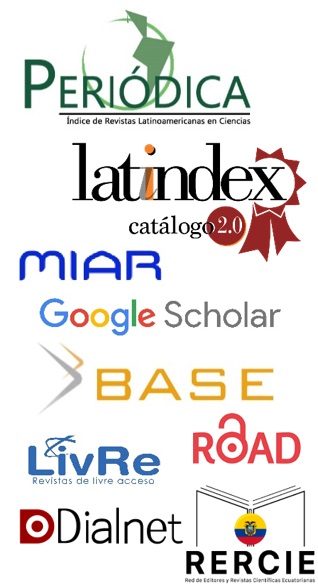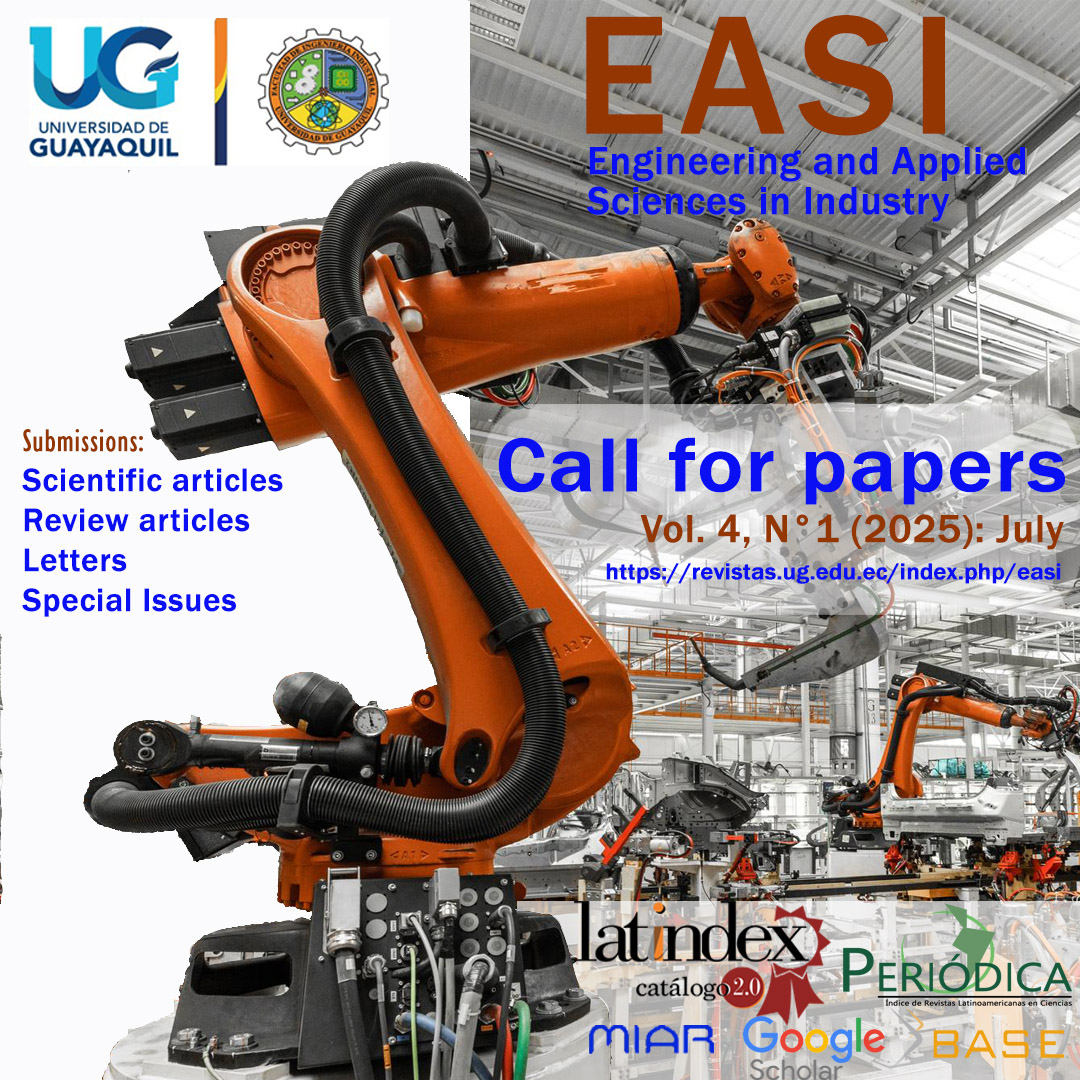Socioeconomic impact of dairy farming in indigenous communities of Ecuador
DOI:
https://doi.org/10.53591/easi.v2i1.1907Keywords:
Socio-economic Analysis, Dairy farming, Rural development, indigenous communitiesAbstract
The economic system of agricultural production in Ecuador is an integrated activity into the productive chains and markets in indigenous communities. Its comprehensive analysis allows characterizing and zoning production in these populations. The intervention area was Colta, a canton in the Chimborazo province. The data was obtained through direct interviews with dairy producers and processors, through random sampling by productive areas, covering two urban and four rural parishes (Cajabamba, Sicalpa, Columbe, Cañí, Juan de Velasco and Santiago de Quito). Milk production is considered the most profitable activity, despite the low price that the producer receives. Currently, 81% of farmers receive less than 0.40 USD/L of milk, which covers production costs and contributes to a sustainable circular economy for the area. The production depends on a low technology level family system. Most of the production is destined for small marketing channels such as artisan cheese shops and sales to wholesalers. In conclusion, despite the limited technological development in the region, there are opportunities for improvement both in industry and in the social of vulnerable populations.
References
Acosta, F.A. & Calvi, M. (2003). Gestión de la empresa ganadera. Documentos para Capacitación. Proyecto Ganadero de Corrientes. Plan de Capacitación. Producción Animal. [en línea], https://www.produccion-animal.com.ar/empresa_agropecuaria/empresa_agropecuaria/62-gestion.pdf
Agudelo, A.C. (2019). El Sistema Participativo de Garantías SPG-como mecanismo de evaluación de la calidad de los productos lácteos artesanales y su contribución a la seguridad alimentaria y nutricional. Revista Estrategia Organizacional, 10 (1). [en línea], https://doi.org/10.22490/25392786.4553
Argemi, L. (2001). La historia de la economía agraria: una primera aproximación. Revista Española de Estudios Agrosociales y Pesqueros, 192 (2002), 9-32. [en línea], https://doi.org/10.22004/ag.econ.165069
Aubron, C.; Cochet, H.; Brunschwig. G. y Moulin, C.H. (2009). Labor and its productivity in Andean dairy farming systems: a comparative approach. Human Ecology, 37 (4), 407-419. [en línea], https://doi.org/10.1007/s10745-009-9267-9
Barlow, D.H. & Hersen, M. (1984). Single case experimental designs. Strategies for studying behavior change. 2nd ed. New York: Pergamon, 1984
Bautista H., Valeeva, G., Danilevich, A., Zinovyeva, A. (2020). A Development Strategy for the Revival of Tourist Hotspots following the COVID-19 Pandemic. International Journal of Criminology and Sociology, 10, 209-216. [en línea], https://www.lifescienceglobal.com/images/Bautista_IJCS.pdf
Bernet, T., Staal, S. & Walker, T. (2001). Changing milk production trends in Peru. Mountain Research and Development, 21(3), 268-275. [en línea], https://doi.org/10.1659/0276-4741(2001)021[0268:CMPTIP]2.0.CO;2
Bernhardson, W. (1985). Tierra, trabajo y ganadería indígena en la economía regional de Arica. Revista Chungará, 15, 151-167. [en línea], https://www.jstor.org/stable/27801837
Catacora-Vargas, G., Piepenstock, A., Sotomayor, C., Cuentas, D., Cruz, A. & Delgado, F. (2017). Brief historical review of agroecology in Bolivia. Agroecology and Sustainable Food Systems. 41 (3-4), 429-447. [en línea], https://doi.org/10.1080/21683565.2017.1290732
Espin, W.P., Bastidas, M.B. & Durán, A. (2017). Propuesta metodológica de evaluación del balance social en asociaciones de economía popular y solidaria del Ecuador. CIRIEC. Revista de economía pública, social y cooperativa. 90, 123-157. [en línea]. https://www.redalyc.org/pdf/174/17452685005.pdf.
Flores, S. & Torres, S. (2012). Ganaderas en la producción de leche: una realidad oculta por el imaginario social en dos zonas de Nicaragua. Encuentro, 92, 7-28. [en línea], https://doi.org/10.5377/encuentro.v0i92.790
Gadekar, B.B. (2021). Livestock and agricultural development, Lulu Publication, EEUU. [en línea], https://books.google.com.ec/books?id=XmMzEAAAQBAJ.
Garcia, O. & Gomez, C.A (2006). The economics of milk production in Cajamarca, Peru, with particular emphasis on small-scale producers. Livestock Production. Disponible desde Internet en: https://www.academia.edu/51641077/The_Economics_of_Milk_Production_in_Cajamarca_Peru_with_Particular_Emphasis_on_Small_Scale_Producers. [21/10/2021]
Georgieva, S.V., Vásquez, E.; Barja, G., Serrano, F.G. & Flores, R.L. (2009) Establishing Social Equity: Bolivia, Ecuador, and Peru. In Gacitúa-Marió, E., Norton, A., Georgieva, S. (Eds). Building Equality and Opportunity Through Social Guarantees: New Approaches to Public Policy and the Realization of Rights (pp. 143-174). The World Bank. 10.1596/978-0-8213-7883-0.
Guevara, R.V., Lascano, P.J., Arcos, C.N., Guevara, C.S., Inga, C.S., Torres, C.S., Narváez, J.A.,…, Guerrero, F.M. (2020). Caracterización físico-productiva y tipologías de sistemas lecheros diversificados en la sierra de Ecuador. Archivos de zootecnia. 69 (268), 418-423. [en línea], https://doi.org/10.21071/az.v69i268.5389
Holloway, L. (2007). Subjecting cows to robots: farming technologies and the making of animal subjects. Environment and Planning D: Society and Space. 25 (6),1041-1060. [en línea], https://doi.org/10.1068/d77j
Le, Guern, P. (2020). Robots, livestock farming, and technocapitalism. Reseaux. 2-3 (220-221), 253-291. [en línea], https://doi.org/10.3917/res.220.0253
Lupien, P., Posso, M., Basantes, A. & Chiriboga, G. (2020). Incidencia de las TIC en la comercialización de los productos de las comunidades rurales indígenas en el Ecuador. Canadian Journal of Latin American and Caribbean Studies. 45 (1), 64-82. [en línea], https://doi.org/10.1080/08263663.2020.1690801
Ministerio de Agricultura y Ganadería (2021 a). Reporte mensual de precios de leche cruda adquirida por las industrias lácteas en cumplimiento al Acuerdo Ministerial Nº 394. Disponible desde Internet en: https://www.agricultura.gob.ec/acuerdo-ministerial-no-394/ [21/10/2021].
Ministerio de Agricultura y Ganadería (2021 b). Incremento de la producción lechera según el Acuerdo Interministerial Nro.177. Disponible desde Internet en: https://www.agricultura.gob.ec/ecuador-se-nutre-de-leche-y-el-sector-lacteo-se-fortalece-con-apoyo-del-gobierno-nacional/ [21/10/2021].
Minteguiaga, A., Ubasart-González, G. (2021). Reviewing Exclusionary Welfare Regimes: Andean Countries (Bolivia, Ecuador, and Peru). In: Sátyro, N., del Pino, E., Midaglia, C. (eds) Latin American Social Policy Developments in the Twenty-First Century. Palgrave Macmillan, Cham. https://doi.org/10.1007/978-3-030-61270-2_4
Meléndez, R.M., Valdivia, A.G., Rangel, E.J., Díaz, E., Segura-Correa, J.C. & Guerrero, A.L. (2010). Factores de riesgo asociados a la presencia de aborto y desempeño reproductivo en ganado lechero de Aguascalientes. Revista mexicana de ciencias pecuarias. 1(4), 391-401. [en línea], http://www.scielo.org.mx/scielo.php?pid=S2007-11242010000400007&script=sci_arttext
Organización de las Naciones Unidas para la Alimentación y la Agricultura. (2020). El estado de la seguridad alimentaria y la nutrición en el mundo 2020. Transformación de los sistemas alimentarios para que promuevan dietas asequibles y saludables. FAO. Disponible desde Internet en: http://www.fao.org/publications/sofi/2020/es/ [21/10/2021].
Pallete, A.E.P., Malaga, A. & García, M. (2018). Características socioganaderas y niveles de productividad de establos lecheros de la Irrigación Santa Rita en Arequipa. Anales Científicos. 79 (1), 130-136. [en línea], http://dx.doi.org/10.21704/ac.v79i1.1149
Plan de desarrollo y ordenamiento territorial Colta (2019). Plan de desarrollo y ordenamiento territorial del Cantón Colta, administración 2019 al 2030. Disponible desde Internet en: http://app.sni.gob.ec/sni-link/sni/PORTAL_SNI/data_sigad_plus/sigadplusdocumentofinal/0660000520001_PDOT_COLTA_2014_15-03-2015_19-11-32.pdf [21/10/2021].
Plan de desarrollo y ordenamiento territorial Chimborazo. (2015). Plan de desarrollo y ordenamiento territorial del Cantón Colta, administración 2015 al 201. Disponible desde Internet en: http://app.sni.gob.ec/sni-link/sni/PORTAL_SNI/data_sigad_plus/sigadplusdocumentofinal/0660000280001_PDyOT%20FINAL%20-%20160516%2013y50_16-05-2016_19-06-53.pdf [21/10/2021].
Pérez, L.A. (2014). La asociatividad en el sector agropecuario del Carchi y su potencial de producir y comercializar semielaborados de papa y leche. 7, 153-163. [en línea], https://doi.org/10.32645/13906925.348
Ríos, G.P. & Gómez, L.M. (2008). Análisis de costeo para un sistema de producción de lechería especializada “un acercamiento al análisis económico en ganadería de leche”: DYNA, 155, 37-46. [en línea], https://www.redalyc.org/articulo.oa?id=49611953005
Rodríguez, D.C.; Rodríguez, M.T.; Pérez, L.B.; Molina, O.M.; Varela, O.T. & Ayala, E.E. (2012). Evaluación de la sustentabilidad social, económica y productiva de dos agroecosistemas de producción de leche en pequeña escala en el municipio de Amecameca. Revista Científica UDO Agrícola. 12(3), 690-704. [en línea], https://dialnet.unirioja.es/servlet/articulo?codigo=4690130
Roman Christophe, Larpin Martine, Wong Teresa. La ganadería lechera en la Cuenca alta del Cañete — Su rol en el desarrollo de los sistemas agrarios y su articulación al mercado nacional. In: Bulletin de l'Institut Français d'Études Andines, tome 15, N°1-2, 1986. pp. 84-97. [en línea] www.persee.fr/doc/bifea_0303-7495_1986_num_15_1_928
Sieder, R. & Barrera, A. (2017). Women and legal pluralism: lessons from indigenous governance systems in the Andes. Journal of Latin American Studies. 49(3), 633-658. [en línea], https://doi.org/10.1017/S0022216X16002273
Velarde, C.T. & Wanderley, F. (2021). Contribución de la agricultura familiar campesina e indígena a la producción y consumo de alimentos en Bolivia. Centro de Investigación y Promoción del Campesinado (CIPCA). https://cipca.org.bo/docs/publications/es/247_cuaderno-91ok-comprimido.pdf
Published
How to Cite
Issue
Section
License
Copyright (c) 2023 Gabriela Andrade, María Andrade, Andrés Suárez-Usbek, Hugo Bautista-Espinoza, Andres Haro-Haro

This work is licensed under a Creative Commons Attribution-NonCommercial-NoDerivatives 4.0 International License.
Contributions published in the EASI journal follow the open access license CC BY-NC-ND 4.0 (Creative Commons Attribution-NonCommercial-NoDerivs 4.0). This license empowers you as an author and ensures wide dissemination of your research while still protecting your rights.
For authors:
- Authors retain copyrights without restrictions according to CC BY-NC-ND 4.0 license.
- The journal obtains a license to publish the first original manuscript.
For readers/users:
Free access and distribution: Anyone can access, download, copy, print, and share the published article freely according to the license CC BY-NC-ND 4.0 terms.
Attribution required: If any third party use the published material, they must give credit to the creator by providing the name, article title, and journal name, ensuring the intellectual property of the author(s), and helping to build the scholarly reputation.
Non-commercial use: only noncommercial use of the published work is permitted. Noncommercial means not primarily intended for or directed towards commercial advantage or monetary compensation by any third party.
No modifications allowed: The content of the published article cannot be changed, remixed, or rebuilt upon the author’s work. This ensures the integrity and accuracy of the research findings.



